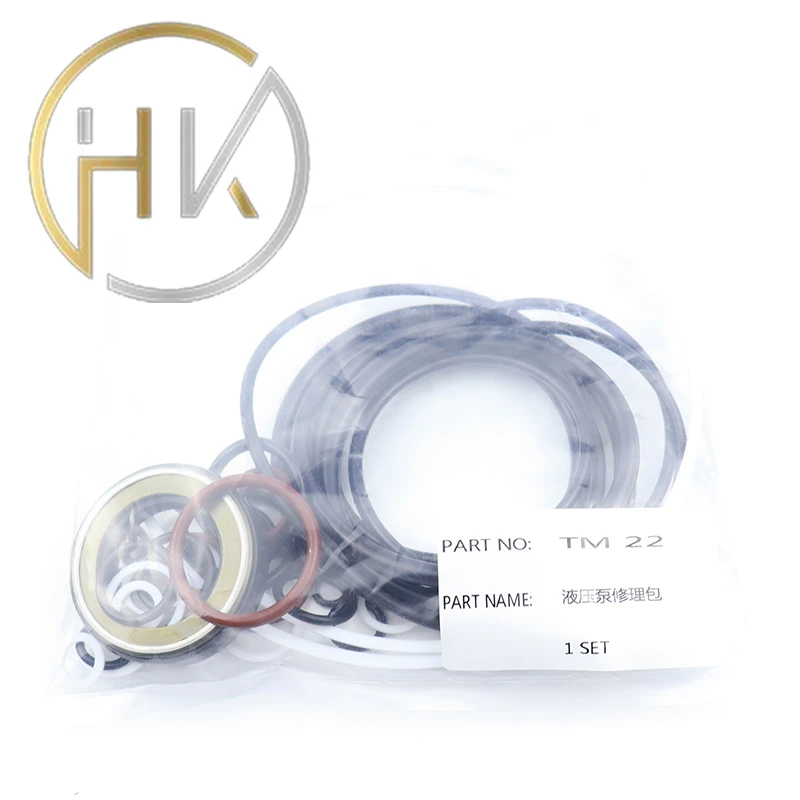Dec . 09, 2024 17:36 Back to list
Hydraulic Cylinder Wiper Seal for Enhanced Performance and Durability
Understanding Wiper Seals in Hydraulic Cylinders
Hydraulic cylinders are integral components in various machinery and equipment, enabling force transmission through fluid pressure. Among the critical parts of a hydraulic cylinder is the wiper seal, a component often overlooked yet essential for the reliability and longevity of hydraulic systems. This article delves into the significance, functions, types, and maintenance of wiper seals in hydraulic cylinders.
What is a Wiper Seal?
A wiper seal, sometimes referred to as a scraper seal, is designed to prevent external contaminants from entering the hydraulic cylinder while simultaneously keeping hydraulic fluid from leaking out. Positioned at the end of the cylinder rod, the wiper seal acts as the first line of defense against dirt, dust, moisture, and other impurities. Given the operational environments of many hydraulic systems, maintaining a clean internal environment is crucial for optimal performance.
The Importance of Wiper Seals
Wiper seals play a vital role in enhancing the overall efficiency and functionality of hydraulic cylinders. Here are some reasons why they are so important
1. Contaminant Protection Hydraulic systems are often exposed to harsh conditions. Wiper seals help keep abrasive materials—like dirt and debris—out of the cylinder. This protection is paramount; even small particles can cause significant wear and tear on cylinder walls and moving parts.
2. Fluid Retention While the primary function of a wiper seal is to keep contaminants out, they also help reduce fluid loss. Proper sealing ensures that hydraulic fluid remains within the system, maintaining pressure and efficiency.
3. Extended Service Life By preventing contamination and fluid leakage, wiper seals significantly contribute to the longevity of hydraulic cylinders. This not only reduces downtime for repairs but also minimizes replacement costs, enhancing the overall cost-effectiveness of hydraulic systems.
4. Operational Efficiency Clean hydraulic fluid translates to smoother operation, reduced energy consumption, and better performance. Wiper seals maintain the integrity of the fluid environment, which is critical for optimal hydraulic function.
Types of Wiper Seals
Wiper seals come in various designs and materials, tailored for specific applications and operational conditions. Below are some common types
wiper seal hydraulic cylinder

1. Single Lip Wiper Seals These are the simplest form of wiper seals, featuring a single lip that effectively scrapes contaminants away from the rod. They are suitable for low-pressure applications.
2. Double Lip Wiper Seals Offering enhanced protection, double lip wipers have two sealing edges. They provide better contact with the rod, minimizing the risk of leakage and contamination ingress.
3. U-Cup Wipers Designed in the shape of a ‘U’, these seals are effective in applications where space is limited, yet where strong scraping action is still needed.
4. Material Variations Common materials for wiper seals include polyurethane, rubber, and PTFE. The choice of material depends on factors such as temperature, chemical exposure, and specific application requirements.
Maintenance of Wiper Seals
To ensure that wiper seals perform optimally, regular maintenance is essential. Here are some tips for maintaining wiper seals
1. Regular Inspection Frequent checks can help identify any signs of wear or damage to the wiper seals. Early detection can prevent more severe issues down the line.
2. Cleaning Keeping the exterior of the hydraulic cylinder clean can reduce the amount of dirt and debris that the wiper seals encounter. Using appropriate cleaning methods ensures that the seals remain functional.
3. Lubrication Some wiper seals benefit from periodic lubrication, which can reduce friction and extend their service life. Always use the manufacturer's recommended lubricants to avoid damaging the seals.
4. Replacement If wear is detected, timely replacement of wiper seals is crucial. Using the correct type and size is essential to maintain system integrity and performance.
Conclusion
In summary, wiper seals are an indispensable component of hydraulic cylinders. Their role in preventing contamination, retaining fluid, and extending the lifespan of hydraulic systems cannot be overstated. By understanding the importance of these seals and implementing proper maintenance practices, operators can ensure the optimal performance of their hydraulic machinery and equipment. Investing in quality seals and regular inspections ultimately leads to safer, more efficient operations and significant cost savings in the long run.
-
TCN Oil Seal Metal Ring Reinforcement for Heavy Machinery
NewsJul.25,2025
-
Rotary Lip Seal Spring-Loaded Design for High-Speed Applications
NewsJul.25,2025
-
Hydraulic Cylinder Seals Polyurethane Material for High-Impact Jobs
NewsJul.25,2025
-
High Pressure Oil Seal Polyurethane Coating Wear Resistance
NewsJul.25,2025
-
Dust Proof Seal Double Lip Design for Construction Equipment
NewsJul.25,2025
-
Hub Seal Polyurethane Wear Resistance in Agricultural Vehicles
NewsJul.25,2025
-
The Trans-formative Journey of Wheel Hub Oil Seals
NewsJun.06,2025
Products categories
















